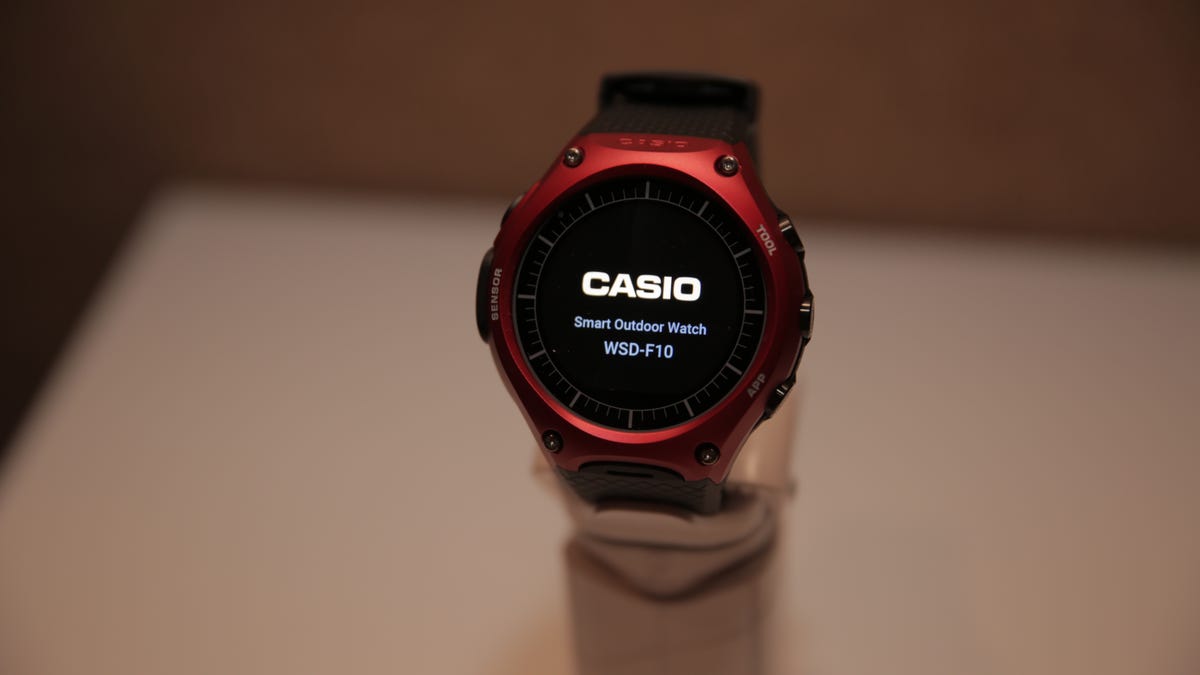The Mysterious Evolution of Nike Tech
Nike Tech has been synonymous with athletic wear and innovative technology for decades. The company started out as a small sneaker manufacturer in the early 1960s, but quickly made a name for itself with its innovative designs and forward-thinking approach to sports apparel. Over the years, Nike has continued to push the boundaries of what is possible with technology, expanding its reach beyond just footwear and into the world of smart wearables and smartphones.
In this post, we’ll take a closer look at the evolution of Nike tech, tracing the company’s journey from its humble beginnings to the present day. Whether you’re a die-hard sneakerhead or just someone who appreciates the latest in wearable tech, this post is sure to provide some fascinating insights into the world of Nike tech.
-
Introduction to Nike and the evolution of tech

Nike is one of the most recognizable brands in the world. Founded in 1964, Nike has been at the forefront of innovation in the athletic wear industry for decades. The brand is known for its iconic “swoosh” logo and legendary slogan “Just Do It.” However, Nike’s success goes far beyond its branding and advertising efforts. One of the main reasons for Nike’s popularity and success is the company’s commitment to technological innovation.
Over the years, Nike has continually pushed the boundaries of what’s possible in athletic wear through its innovative use of technology. From the first Nike sneakers to the latest smartphone-connected gear, Nike has been at the forefront of developing new technologies that help athletes perform better and feel more comfortable. This commitment to innovation has helped Nike stay relevant and popular with consumers for over half a century. In this blog post, we’ll inspect Nike’s evolution and explore some of the brand’s most innovative tech products and features.
-
The early days: Nike’s first technology breakthroughs
In the early days of Nike, the company was primarily concerned with creating sneakers that would help runners perform better and reduce their risk of injury. It wasn’t until the late 1970s that Nike made its first major technology breakthrough with introducing the Nike Air cushioning system.
The Nike Air technology was designed to provide runners with a more comfortable and cushioned running experience. The first shoes to feature the Nike Air technology were the Nike Tailwind, which were debuted at the Honolulu Marathon in 1978.
Following the success of the Nike Air cushioning system, the company continued to innovate in the field of running shoe technology. In 1984, Nike introduced the Nike Pegasus, which featured a new airbag design that provided even more cushioning than the original Nike Air cushioning system.
In addition to its advancements in shoe technology, Nike also began to explore the use of new materials in its products. In 1988, the company introduced the Nike Aqua Sock, which was made from a neoprene material that provided a snug and comfortable fit without the need for laces.
Through these early breakthroughs in technology, Nike established itself as a leader in the world of athletic footwear and paved the way for the many innovations that would come in the years and decades to follow.
-
The importance of air: How Air technology changed the game
When it comes to Nike’s technological advancements, Air technology has been a game-changer. The technology was first introduced in 1979, and since then, it has been a staple in the brand’s sneakers. Air technology works by using air-filled pockets in the shoe’s sole to provide cushioning and support for the feet. This technology has been implemented in various Nike sneaker models, including the Nike Air Max, Nike Air Force 1, and Nike Air Jordan, to name a few.
But what makes Air technology so important? For one thing, it revolutionized the way athletes and everyday people alike think about footwear. Before Air technology, sneakers were relatively flat and offered little in the way of cushioning or comfort. Air technology changed that, allowing for a more comfortable and supportive experience while running, jumping, or simply walking.
Another reason why Air technology is so important is that it has been a driving force in Nike’s success over the years. The brand’s Air Max line, in particular, has been a best-seller for decades, with new models and colorways being released regularly. The popularity of the Air Max line has been a large part of Nike’s growth and success, and it’s all thanks to the Air technology that made it possible.
In conclusion, Air technology has played an instrumental role in Nike’s evolution, allowing the brand to create sneakers that are not only stylish but also comfortable and supportive. It’s safe to say that without Air technology, Nike would not be the powerhouse brand that it is today.
-
The birth of Flywire: A new era in support
In 2008, Nike introduced Flywire technology, a revolutionary approach to support in footwear design. The inspiration for Flywire came from the suspension bridges of the world, which use a series of cables to support the bridge deck. This design allows for a lightweight and stable structure, which is exactly what Nike was trying to achieve with their shoes.
Flywire technology uses thin, lightweight cables that are strategically placed throughout the shoe’s upper to provide support and stability where it’s needed most. By reducing the weight of the shoe and providing targeted support, Flywire technology has allowed Nike to create shoes that are both more comfortable and more functional than ever before.
The introduction of Flywire technology has had a significant impact on Nike’s product line. It’s been incorporated into a wide range of shoes, from running shoes to basketball shoes, and has allowed Nike to push the boundaries of footwear design even further. With Flywire technology, Nike has been able to create shoes that are both high-performing and stylish, cementing their place as a leader in the athletic footwear industry.
-
Nike+ and the rise of smart shoes
Nike has always been at the forefront of innovation, and the Nike+ technology was a game-changer for the fitness industry. The Nike+ platform was launched in 2006, and it allowed users to track their fitness data using a combination of sensors and software. This technology was initially available as a separate sensor that could be attached to Nike shoes.
But Nike didn’t stop there. In 2012, Nike launched its first smart shoe, the Nike+ Hyperdunk. This shoe was equipped with sensors that could track a range of data, including the wearer’s jump height, speed, and overall performance. The data could be synced with the Nike+ app, allowing users to track their progress and compare their performance to other Nike+ users.

Since then, Nike has continued to innovate in the smart shoe space, with products like the Nike Adapt BB, which features a custom motor and gear train that automatically adjusts the fit of the shoe based on the wearer’s foot shape and activity level.
With the rise of smart shoes, Nike has created a whole new category of products that combine fashion and technology. These shoes not only look great but also help wearers optimize their performance and achieve their fitness goals. It’s safe to say that Nike+ and smart shoes have revolutionized the sneaker industry, and we can’t wait to see what Nike comes up with next.
-
The future of Nike tech: Self-lacing shoes and beyond
Nike has always been at the forefront of innovation and technology, pushing the boundaries of what is possible in the athletic apparel industry. One of the most exciting developments in Nike’s tech evolution has been the advent of self-lacing shoes. Inspired by the fictional shoes worn by Marty McFly in the classic movie “Back to the Future Part II,” Nike has reimagined the concept of the self-lacing shoe as a practical reality for athletes and consumers alike.
The first iteration of Nike’s self-lacing shoe, the HyperAdapt 1.0, was released in 2016 and created a huge buzz in the industry. The shoe features a motorized system that senses the movements of the wearer’s foot and adjusts the laces accordingly, providing a customized and secure fit. Not only is this a major step forward in athletic performance, but it also has the potential to revolutionize footwear for people with disabilities or mobility issues.
But Nike’s tech evolution doesn’t stop there. The company is constantly exploring new materials, designs, and technologies to enhance their products and provide even greater value to their customers. From smart fabrics that adjust to changing temperatures, to augmented reality experiences that allow customers to try on shoes virtually, to data-driven insights that help athletes optimize their training, Nike tech is leading the way in innovation and pushing the boundaries of what is possible in the world of sports and technology. It’s an exciting time for Nike fans and tech enthusiasts alike, and we can’t wait to see what the future holds for this iconic brand.
-
The impact of Nike tech on sports and fashion
Nike has been leading the way in the development of athletic wear and footwear, particularly in the realm of technology. While the brand has been known for its iconic designs, it has also been pushing the boundaries of what is possible in terms of performance and comfort for athletes.
One of the ways that Nike has achieved this is through the use of innovative materials, such as Flyknit, which is a lightweight and breathable material that is used in many of their shoes. This material provides a more flexible and supportive fit, allowing athletes to move more freely and comfortably.
In addition to these advancements in performance technology, Nike has also played a major role in the fashion world. Many of the company’s designs have become iconic in their own right, with people wearing Nike clothing and accessories both on and off the field.
The impact of Nike tech on sports and fashion has been significant, with the brand setting trends and inspiring new generations of athletes and fashion enthusiasts. With its continued commitment to innovation and design, it’s clear that Nike will continue to be a major player in the world of sports and fashion for years to come.
-
The challenges of balancing performance with aesthetics
One of the most significant challenges that Nike faces when developing new technology is finding the perfect balance between performance and aesthetics. In today’s world, consumers demand products that not only perform well but also look great. This applies to everything, from sneakers to smartphones and everything in between.
Nike understands that creating products that perform well but look unappealing is a recipe for failure. On the other hand, creating products that look great but don’t perform well is equally as bad. This is why Nike invests heavily in research and development to ensure that their products not only perform well but also look great.
For example, Nike’s Flyknit technology is a prime example of how the company has successfully balanced performance with aesthetics. The material is not only lightweight and breathable but also looks great and has become a staple of many Nike products. Additionally, Nike’s Air Max technology has been a hit with consumers due to its unique design that not only looks great but also provides excellent cushioning and shock absorption.
In conclusion, finding the perfect balance between performance and aesthetics is a critical challenge for Nike. However, through research and development, the company has been able to create products that not only perform well but also look great. This has allowed Nike to remain one of the most popular and innovative brands in the world.
-
The role of customer feedback in Nike’s tech development
Nike has long been known for its innovative technology in the world of sports apparel. But how does Nike know what technology to develop? The answer is simple: customer feedback.
Nike has always been a company that listens to its customers. They have teams dedicated to gathering feedback from athletes and non-athletes alike. This feedback is then used to develop new products and improve existing ones.
For example, the Nike Air Max was developed in response to customer feedback. The Air Max was the first Nike shoe to feature visible air pockets in the sole. The idea for visible air pockets came from a customer who said that they wanted to see the air they were walking on.
In addition to gathering feedback from athletes and customers, Nike also uses data analysis to inform their product development. They gather data on how athletes move and use this data to develop products that will help improve their performance.
By prioritizing customer feedback, Nike has been able to consistently stay ahead of the curve in terms of technology and innovation. This approach has helped them create products that not only meet the needs of their customers but also exceed their expectations.
-
Conclusion: Nike’s ongoing commitment to innovation and excellence
Throughout its history, Nike has established itself as a leader in innovation and excellence. From humble beginnings as a small athletic shoe company to becoming one of the biggest brands in the world, Nike’s commitment to pushing the boundaries of technology has been unwavering.
Through the years, Nike has consistently invested in research and development to ensure that its products are at the forefront of technological advancements. The brand’s focus has always been on creating products that not only look great but also perform well.
As a result, Nike tech has introduced numerous game-changing technologies that have redefined the athletic industry. From the Air Jordan sneakers to the Nike+ app, the brand has always aimed to improve the performance of athletes by providing them with the best tools possible.
Looking to the future, Nike’s commitment to innovation shows no signs of slowing down. The brand continues to invest in new technologies such as 3D printing, machine learning, and sustainable materials, among others. Nike’s focus on sustainability, in particular, shows that it is committed to not only creating high-performance products but also being a responsible corporate citizen.
Other useful relates Items
- nike tech fleece
- nike tech suit
- black nike tech
- nike tech jacket
- red nike tech
- Nike Tech
In conclusion, Nike’s ongoing commitment to innovation and excellence has made it one of the most successful and respected brands in the world. With a rich history of technological breakthroughs, and a focus on sustainability and social responsibility, Nike tech is poised to lead the athletic industry into the future.
We hope you enjoyed reading our article about the evolution of Nike tech. From their humble beginnings selling sneakers to their innovative designs in smart clothing and smart sports equipment, Nike has always been at the forefront of sports technology. We are excited to see what the future holds for Nike and their continued commitment to improving athletic performance through technology. Thank you for reading and joining us on this journey through Nike’s tech evolution.














1 comment